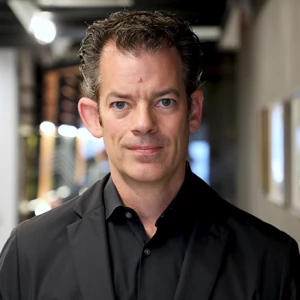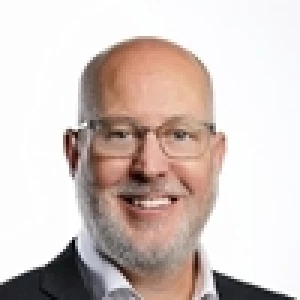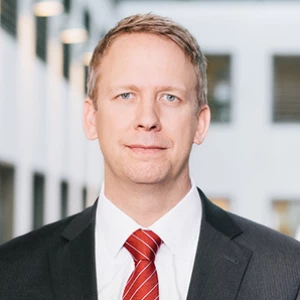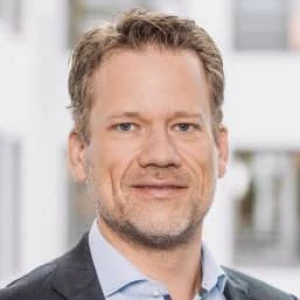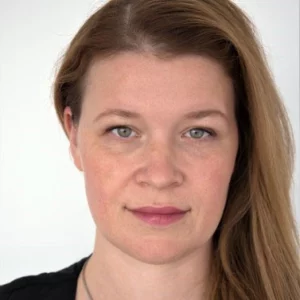The last time the possibility of recession loomed was 2019, when many managers expected it was around the corner. We didn’t get a downturn; instead, the world was plunged into a global pandemic. We climbed out two years later to be greeted by Russia’s full-scale invasion of Ukraine and a war that continues to rage, affecting economies worldwide.
Downturns may actually be among the lesser of today’s worries. The tech sector is pulling back, but elsewhere the labor market remains tight. (See “Coping with Layoffs.”) Meanwhile, dark clouds—geopolitical, environmental, and economic—hang over the horizon. Another medical calamity (including a rebound of COVID) is not out of the question.
Coping with Layoffs
Staff reductions are never an easy process to manage, and agile’s focus on team delivery over individual contribution complicates matters further. Most managers have not had experience with situations such as keeping the best talent across squads and keeping teams functioning when a member (and perhaps a key skill) is let go.
Based on our experience with agile organizations that have had to reduce staff, here are some guidelines to follow. The principles are to minimize disruption for the reasons stated above, especially at the team level, and to maintain the ability of teams to deliver. Above all, companies want to avoid any scenario that disrupts multiple or all teams.
Prioritize Work by Value. Apply a value lens in deciding what work proceeds and what work stops. Refocus teams as necessary to tackle top corporate priorities and cut back work on lower value tasks. Review teams’ objectives and key results (OKRs) to make sure they are aligned with business priorities, and use the OKRs to de-emphasize low-value work.
Evaluate a Broad Option Set. How can you keep teams intact to the full extent possible? For example, can you rotate teams that work as usual for one sprint then go unpaid for the next—so that you effectively remove capacity and cost without any actual layoffs? Consider shorter work hours and reduced pay, shrinking the work backlog to match. And freeze hiring for any open requirements.
When evaluating talent, consider both mindset and skill set to ensure the right mix for success going forward. Emphasize “multipliers”—those who get the most out of their teams—over “diminishers,” those that rely more on their own abilities.
Take Team-Level Action. If layoffs are necessary, consider actions at the team level to keep well-performing teams together and focused on the top priorities. Review spans and layers of leadership, and target teams doing less-valuable work. Redeploy valuable talent where possible. Say, for example, a manager needs to lay off 20 people—or the equivalent of two teams out of the ten that they oversee. The manager will need to decide if there is less disruption in simply cutting the two teams that are producing the least valuable results or laying off members from multiple teams and either reconstituting the teams affected by reassigning members or having the teams continue short-handed. This can be a difficult analysis. Having sound and well-aligned OKRs in place can help bring clarity to the decision-making process.
Facing such uncertain times, several of our colleagues have written about the need for CEOs to build
resiliency
into their companies, tackling such issues as competitive cost position, supply chain disruption, organizational preparedness, and financial strength. Other colleagues have pointed to the need to shift the strategic focus from building scale to establishing more
fractal organizations
that can win local customers and compete with advantage in micromarkets and fast-developing profit pools.
There’s no question that companies and their leaders need to develop the right capabilities to deal with whatever turns the world throws at them. One of these—and one that supports both resiliency and fractal development—is agility. Another related capability is tying work more closely to outcomes.
Agility and Resiliency
We have previously written that more companies have been turning to
agile ways of working
as a high-potential approach for maintaining resilience through a potential trough. Resilient companies put themselves in a position to spot opportunities that exist amid uncertainty and move more quickly than others to seize them. Agile’s cross-functional teams working in short, iterative sprints informed by customer feedback support greater resilience in multiple ways.
- Organizations can pivot and adjust to changing circumstances much more quickly. Agile companies have proven to be two to four times faster in responding to change than traditional companies.
- Agile transformations structurally change ways of working, with the goals of increased speed and customer centricity. Almost invariably, this unlocks an average 15% to 25% cost reduction in operations. As we recently pointed out with respect to health insurers, many companies face a challenge they have not seen before: the need to cut massive amounts of cost out of their organizations without cutting staff. Instead, they must eliminate or streamline basic tasks and redirect employees to take on higher-value and, in many cases, new, more technology-based types of work. Agile is built for this type of challenge.
- Thriving in a downturn requires diligence and skill. People who are engaged and focused become even more important assets. Agile is based on the principles of employee empowerment and transparency, which lead to high rates of engagement—greater than 90% in employee surveys.
Most companies have experimented with pilots and gained experience in what agile can achieve. Winners move to agile at scale to build organizational strength and capability, becoming stronger in the face of adversity.
Going Fractal
Companies that strengthen their resilience can go even further. Fractal companies build advantage by breaking apart their traditional scale-driven, centralized operations and empowering teams with fit-for-purpose capabilities to respond to opportunities at the “edge.” (There are lots of edges: a small market far from the core, for example, or a particular segment of customers, or something related to an important event that just occurred.)
This approach comes easy for many digital natives that were built this way from the start, but it is a tough transition for most incumbents that have spent decades building scale and maximizing efficiency. They need to find the right balance between the traditional strength of scale and the local innovation that is key to winning in a particular country, customer segment, or other defined market.
Many managers may see scale and local autonomy as two ends of a spectrum, a zero-sum tradeoff. But they can break through this conundrum by prioritizing outcomes (rather than work) and dedicating resources accordingly. Agile helps by putting the focus on what’s important at all levels so managers can align resources and work with these goals. This enables companies to better deliver local innovation while still leveraging their scale advantage. (See “Moving to Agile in the Midst of Crisis.”)
Moving to Agile in the Midst of Crisis
Group CEO Hagen Lessing believes agile is the “state-of-the-art management system” for six reasons, which he describes this way:
- Prioritization. The rigorous forced ranking of initiatives by business value helps to focus on what is important. This is even more important in times of crisis.
- Alignment. Agile events, such as annual and quarterly business reviews, ensure 100% alignment of senior managers and all employees—including realignment if short- term exterior changes occur, which we often see during a crisis.
- Focus. Dedicated staffing and concurrent limitations of parallel activities during sprints concentrate the organization on results.
- Complexity reduction. The elimination of coordination roles keeps things moving.
- True customer centricity. Agile imposes an iterative working mode with early and regular customer feedback.
- Everything is measured. Ambitious OKRs set targets, and long-term data-driven KPIs measure success.
Consider the case of a leading wealth management company that saw expanding its business with a specific segment of individual investors as key to strengthening its overall competitive position. In the past, the company might have spent months researching the segment, more months to spec a new online trading platform, then a year or more for IT to design the platform and write and test the software. This time, senior management identified an executive leader to lead the effort and assigned dedicated working teams that included all the necessary skills, including strategy, marketing, technology, data and analytics, and design. The overall effort required more than 500 people, so the company broke down the desired outcomes using fractal principles. Each working unit took on a measurable part of the overall goal and worked mostly independently to achieve it.
For example, one working team of about 100 people was organized into 10 agile “two-pizza” teams (“squads” in the company’s parlance) that took on the goal of generating interest in the target segment, “filling the funnel” with qualified prospects. Another unit took on the goal of converting the people in the pipeline into customers. A third owned the goal of increasing the collective assets under management of these customers over time.
Fractal companies break apart traditional scale-driven, centralized operations and empower teams to respond to opportunities at the “edge.”
Within the fill-the-funnel working group, one squad had the specific target of defining and identifying potential customers in the segment. This eight-person team had members with marketing skills as well as data scientists who could build and test the models used to assess the attributes most likely to identify good prospects. It also included channel specialists who could direct the team’s test marketing campaigns to the appropriate digital, broadcast, and print media.
To maintain balance between creativity at the edge and the scale and efficiency that would ultimately drive profitability, the company established a set of teams focused on designing, building, and pushing the internal adoption of core shared platforms (for digital applications and mobile access, for example). They set up centers of excellence (CoEs) for data analytics, marketing insights, and DevOps (to guide software development and IT operations). The CoE teams set standards and built tools, but also (critically) spent time working in the agile development teams that were the “customers” for their work to ensure adoption and proper application.
Subscribe to our Business Resilience E-Alert
To keep this system organized and focused, the company used a variation of a tool that many companies have paired with agile ways of working: objectives and key results (OKRs). This approach was invented by Andy Grove of Intel and made famous by the exponential growth of Google. Management sets a simple qualitative objective for each desired outcome: fill the funnel with potential prospects. The team sets a few key results, such as awareness scores, number of contacts, number of qualified clients, and conversion rate, by which it assesses progress. OKRs enable the alignment (shared purpose for the organization) and autonomy (freedom for teams at all levels, including at the customer edge, to determine the best ways to achieve the objective). OKRs connect people’s work to desired outcomes and the outcomes to the broader purpose of the organization.
Another wealth management firm developed a program to identify prospects through their interactions with financial advisors. The squad created a set of questions for advisors to identify target customers and the messages that would help these investors understand the products and tools available to them. They designed incentives for the advisors as well as rollout and change management plans to bring the advisors on board. The advisors captured qualified and interested clients in a pipeline tool, giving the firm rapid visibility into the opportunities.
Resilient companies make themselves ready to take advantage of opportunities regardless of what the macroeconomic environment serves up. Fractal organizations move decision-making close to the customer and stay relevant by adapting quickly to evolving “local” conditions. In the uncertain times we seem destined to deal with, these are two approaches that other companies should investigate if not emulate. Whatever course is chosen, the combination of agile ways of working and a cascading system of outcome- and purpose-driven OKRs can be key to success in uncertain times.





